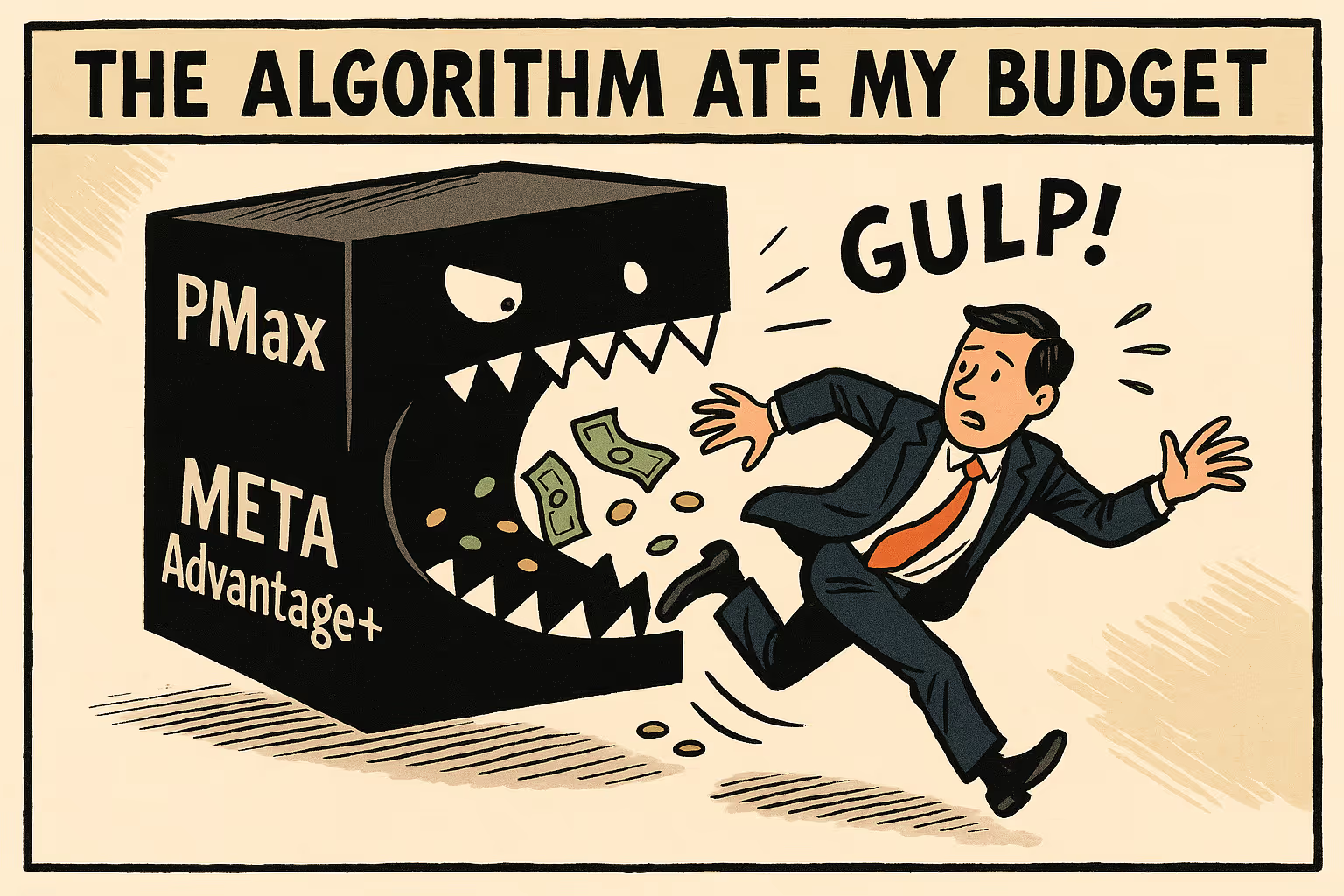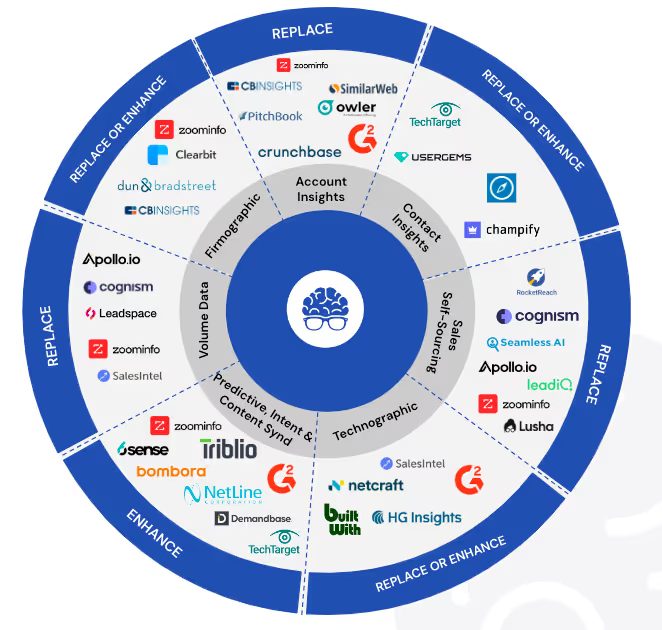The Promise — and the Problem — of Automated Advertising
If 2023 was the year marketers embraced AI in their ad campaigns, then 2025 is the year many realized they’d lost control of it.
Google’s Performance Max (PMax) and Meta’s Advantage+ promised to revolutionize campaign management — automated audience targeting, cross-channel optimization, and machine learning models that supposedly “find the right person at the right time.”
But here’s the catch: those algorithms now control how, where, and why your ad dollars get spent. And while they make optimization effortless, they also make visibility impossible.
Welcome to the age of algorithmic opacity — where you’re told to “trust the machine,” even when it’s quietly draining your budget.
When “Smart” Campaigns Outsmart the Marketer
Ask any seasoned media buyer about PMax or Advantage+, and you’ll likely hear a version of the same story:
“Performance looked good in aggregate… until I realized 80% of the spend went to branded search or remarketing.”
That’s the dirty secret of black-box automation — it works by padding performance with low-hanging fruit.
PMax loves branded queries because they convert easily.
Meta loves retargeting because it inflates ROAS.
The result?
AI systems appear hyper-efficient while quietly siphoning spend into areas you already dominate. You’re not acquiring new customers — you’re overpaying to re-engage the ones you already had.
The Blind Spots Nobody Talks About
1. Brand Safety & Placement
Your ad might be “performing,” but do you know where it’s showing?
Without granular placement data, you could be funding misinformation sites or appearing next to off-brand content.
2. Channel Skew
PMax often pushes spend toward YouTube or branded search, even when Discovery or Display could offer cheaper reach.
Advantage+ leans heavily on dynamic catalog retargeting, starving prospecting efforts.
3. Wasted Impressions
Machine learning systems optimize for click probability, not context. That means your “efficient” impressions might be shown to click-happy users — not qualified buyers.
4. Data Dependency
The longer you let the system run unchecked, the more it optimizes toward its own biases. You’re effectively training an algorithm that works for itself, not for your business.
The Real Cost: Invisible Waste
Marketers used to control the knobs — bids, placements, keywords, audiences. Now, they’re managing meta-systems, hoping that “AI” knows best.
But every layer of automation comes with a hidden tax: opacity.
You can’t optimize what you can’t see.
So while your dashboard reports “record efficiency,” your actual new customer growth may be flat or declining.
In other words: the algorithm didn’t make you better — it just made you blind.
Fighting Back: Reclaiming Visibility and Control
If automation made us efficient, it also made us complacent.
The next generation of media buyers will win not by rejecting AI, but by auditing it.
Here’s how the smartest teams are taking back control:
- Run Channel Isolation Tests: Split PMax campaigns by channel or geography to expose where performance truly comes from.
- Monitor Brand vs. Non-Brand Allocation: Don’t let branded search inflate your numbers — track incremental lift only.
- Benchmark Algorithmic Bias: Measure where spend flows over time. If 70%+ remains stuck in retargeting, the system isn’t learning — it’s looping.
- Layer in Human Oversight: Weekly audits, independent analytics, and third-party visibility tools are essential.
Because if the platform controls both the spend and the reporting, who do you think it’s optimizing for?
Enter AdGenius: Your AI Auditor
This is exactly where AdGenius fits in.
AdGenius acts as a transparency layer — a sort of external conscience for your automated campaigns.
It reveals how and where platforms like Google and Meta actually allocate your dollars:
✅ Surface Hidden Spend Patterns: Identify over-indexed audiences, redundant retargeting loops, and channel bias.
✅ Quantify Waste: Measure how much of your “performance” is cannibalized by branded or low-value impressions.
✅ Reallocate Intelligently: Shift spend in real time toward signals that drive true net-new conversions — not algorithmic comfort zones.
Think of AdGenius as the forensic accountant for your ad budget — one that sees through the fog of automation and tells you what’s really happening beneath the dashboard.
The New Media Buyer’s Mindset
In the next phase of growth marketing, your job won’t be to “trust the algorithm.”
It will be to challenge it.
The future winners will be those who blend machine efficiency with human skepticism — who understand that automation is a tool, not a truth.
AI can amplify what works, but only if you know what’s actually working.
So the next time your dashboard shows record ROAS, ask yourself:
Did the algorithm make you smarter — or just quieter?




